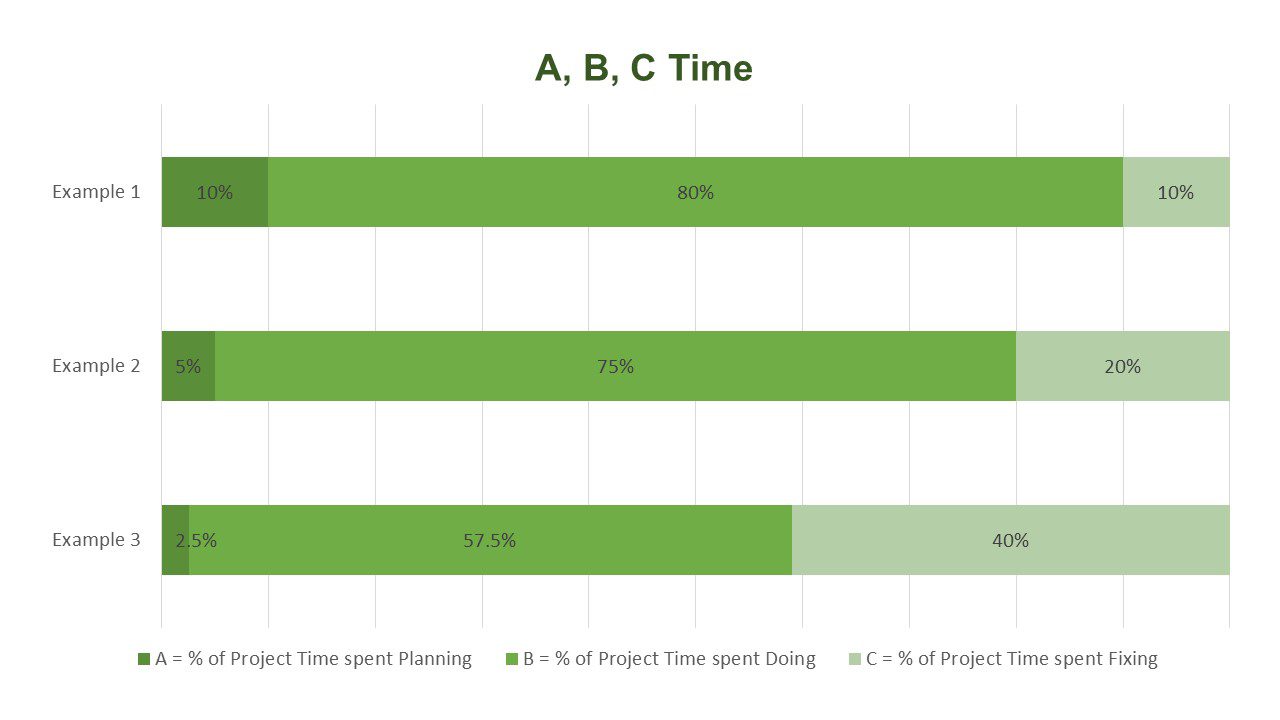 By Ken Thompson, Director of Quality and Efficiency
By Ken Thompson, Director of Quality and Efficiency
At the beginning of the year, we spend a lot of time planning for the year ahead – setting goals and implementing new practices to improve the quality of our services. With spring just around the corner, how we approach our planning and tackle the inevitable time crunch that comes with the warmer weather will determine our success.
At Ruppert, we have found one that of the most effective ways to teach the importance of proper planning is to demonstrate A, B, C time:
- A time represents planning which, while this occurs throughout the project, is most effective prior to starting the job
- B time is spent actually performing the work or completing a specific task
- C time is spent fixing and adjusting work performed or repairing any mishaps made along the way
Based on this premise, let’s assume that in the world of contracting (both maintenance and construction jobs), ideally the planning phase should make up approximately 10% of the total time spent, while 80% should be spent performing work and 10% allocated for adjusting and fixing mistakes. This graph demonstrates that as we decrease planning (A time), the time spent fixing mistakes (C time) inevitably increases. Because our landscape maintenance division is so labor-intensive, mistakes are often more visible and caught early on, but in landscape construction this can be especially deceptive as many mistakes may not be realized until the end of a project. For example, failure to double-check grading prior to pouring concrete could cost four to five times the initial cost to remove and repour, especially if the project is well underway and you then have to work around already completed structures and other trades on site.

As A time is initially cut in half from 10% to 5%, C time doubles from 10% to 20% and B time is thereby reduced from 80% to 75%. As planning time is further reduced to 2.5%, C time is again doubled to 40%, reducing B time to 57.5%. We refer to this as the Rule of 2.5: if you reduce A time by half, you will double C time.
Looking at it laid out this simply you might wonder, why would anyone want to reduce planning time? But thinking about the many concurrent projects we have on our plates, with a multitude of deadlines and customer expectations to meet, it’s easy to understand how we may feel compelled to rush the planning phase and get straight to work. This is where we fall into the trap, because once you rush the planning, you almost guarantee that you will be fixing more mistakes on the back end of the job. This can reduce overall job quality, productivity and customer satisfaction and you are often left feeling disorganized and lacking control in your work and even your personal life, as you spend more time trying to catch up and fix mistakes.
By spending adequate time and energy planning ahead, we are able to strategize about the most effective ways to perform tasks and reduce the risk of errors, which enables us to spend our customer’s money wisely and increases our profitability, which keeps us moving forward. Keep A, B, C time in mind as you start your next project so that we can continue providing value to our customers as we head into spring and beyond.
 By Ken Thompson, Director of Quality and Efficiency
By Ken Thompson, Director of Quality and Efficiency